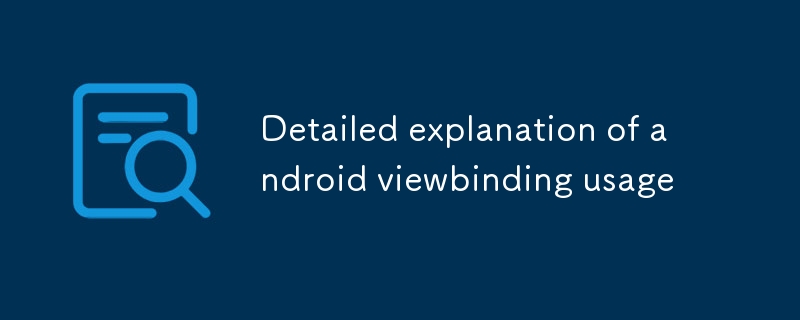
This article discusses performance optimizations for Android View Binding. It highlights techniques to minimize inflate operations, cache inflated views, use synthetic constructors, and leverage '<include>' tags. It also explores advant

Optimizing Android View Binding for Performance
To optimize Android View Binding for performance, consider the following techniques:
inflate() multiple times for the same layout. Instead, store the inflated object in a variable and reuse it as needed.gradle.properties file by setting android.enableSelfDestruct=true.<include> tags: If you have common UI elements that are used across multiple layouts, consider using <include> tags to reduce inflation overhead.Advantages and Disadvantages of Android View Binding
Advantages:
Disadvantages:
Handling Complex View Hierarchies with Android View Binding
To handle complex view hierarchies with Android View Binding:
Atas ialah kandungan terperinci Penjelasan terperinci tentang penggunaan viewbinding android. Untuk maklumat lanjut, sila ikut artikel berkaitan lain di laman web China PHP!
 Kaedah tetapan ruang HTML
Kaedah tetapan ruang HTML
 IIS penyelesaian ralat tidak dijangka 0x8ffe2740
IIS penyelesaian ralat tidak dijangka 0x8ffe2740
 Kaedah pelaksanaan fungsi benteng js
Kaedah pelaksanaan fungsi benteng js
 Senarai lengkap arahan operasi dan penyelenggaraan pelayan linux
Senarai lengkap arahan operasi dan penyelenggaraan pelayan linux
 Penggunaan fungsi rawak bahasa C
Penggunaan fungsi rawak bahasa C
 Apakah kata laluan perkhidmatan mudah alih?
Apakah kata laluan perkhidmatan mudah alih?
 Bagaimana untuk mengunci skrin pada oppo11
Bagaimana untuk mengunci skrin pada oppo11
 Bagaimana untuk melaraskan kecerahan skrin komputer
Bagaimana untuk melaraskan kecerahan skrin komputer




